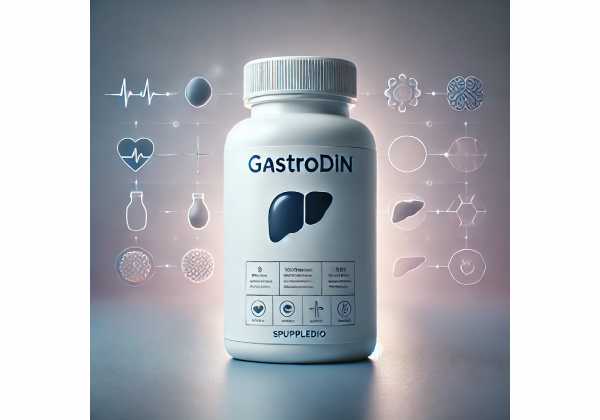
Gastrodin is a naturally occurring compound best known as the primary bioactive of Gastrodia elata (Tian Ma), a traditional East Asian herb used for headaches, dizziness, and neurological complaints. Modern research spotlights gastrodin for potential neuroprotective actions—supporting vascular health in the brain, calming over-excited neurons, and tempering inflammatory and oxidative stress pathways. Small clinical studies and meta-analyses suggest benefits for migraine and medication overuse headache, while early evidence and animal data point to roles in stroke recovery, cognitive support, sleep quality, and mood balance. Forms include oral capsules or tablets and, in some countries, injections used in hospital settings. Although gastrodin has a long history of use and generally favorable tolerability, dose ranges vary across studies, and the quality of evidence is mixed. This guide explains what gastrodin is, the most credible benefits and mechanisms, how to use it thoughtfully, realistic dosage ranges, safety considerations, and how the current evidence stacks up.
Key Insights
- May help reduce migraine frequency and pain intensity; early data suggest broader neuroprotective effects.
- Mechanisms include antioxidant and anti-inflammatory support, GABAergic modulation, and vascular protection.
- Typical oral intakes range from 300–600 mg per day in divided doses; begin lower and titrate.
- Adverse effects are usually mild (e.g., dizziness, nausea), but evidence quality is variable.
- Avoid if pregnant or breastfeeding, and use caution with sedatives or blood pressure medications.
Table of Contents
- What is gastrodin and how it works
- What benefits does gastrodin offer?
- How to use gastrodin effectively
- How much gastrodin per day?
- Side effects, safety and interactions
- What does the research say now?
What is gastrodin and how it works
Gastrodin is a small phenolic glycoside (4-hydroxybenzyl alcohol-4-O-β-D-glucopyranoside). In living systems it is rapidly absorbed, circulates as the parent compound and its aglycone (p-hydroxybenzyl alcohol), and reaches the central nervous system. In traditional practice, Gastrodia elata has been used for headaches, dizziness, epilepsy, and post-stroke symptoms. Modern formulations isolate gastrodin to standardize dosing and study its effects.
Core mechanisms that explain its appeal:
- Antioxidant defense: Gastrodin activates endogenous antioxidant pathways (for example, Nrf2-dependent systems) that upregulate enzymes like superoxide dismutase and glutathione peroxidase. This helps counter excess free radicals and lipid peroxidation—problems that escalate after ischemia, traumatic injury, or chronic neuroinflammation.
- Anti-inflammatory signaling: It has been shown to downshift pro-inflammatory mediators (e.g., NF-κB-related cytokines), support a shift in microglia and astrocytes away from a pro-inflammatory state, and reduce secondary neuronal injury that follows the initial insult.
- Neurotransmitter balance: Gastrodin influences inhibitory and excitatory tone—especially GABA and glutamate dynamics—helping calm neuronal hyperexcitability. This may explain reported benefits in migraine, seizure susceptibility in models, and sleep regulation.
- Vascular and barrier support: In preclinical work, gastrodin helps protect the blood-brain barrier (BBB) and improves microcirculatory parameters. That matters in conditions such as migraine and after ischemia-reperfusion, where endothelial dysfunction and edema exacerbate damage.
- Mitochondrial and autophagy effects: Mitochondria orchestrate cell survival and energy supply; gastrodin has been shown to stabilize mitochondrial function, modulate calcium handling, and normalize autophagic flux—cellular “recycling” that can become dysregulated with stress and aging.
Absorption and delivery notes: Oral gastrodin is water-soluble, absorbed quickly, and appears in the brain at modest levels. Because BBB penetration is not robust, researchers have explored dose titration and novel delivery systems (lipid carriers, intranasal, and focused-ultrasound–assisted methods). In clinical practice, conventional oral dosing is still the norm outside hospital settings.
What makes gastrodin different from many “nootropics” or herbals? It targets multiple nodes—oxidative stress, inflammation, vascular tone, and neurotransmission—rather than a single receptor. That multi-pathway profile may be helpful for complex disorders (migraine, post-ischemic injury), though it also means outcomes can vary by person and condition.
Bottom line: Gastrodin is best understood as a neuroprotective and neuromodulatory compound with plausible mechanisms for headaches, sleep, mood balance, and vascular brain health. Its promise is real, but dosing, delivery, and condition-specific protocols still need refinement.
What benefits does gastrodin offer?
Migraine (preventive and adjunct): The most consistent clinical signal is in migraine. Meta-analytic data pooling randomized trials (mostly Chinese studies) suggest that gastrodin—often as an add-on to standard care—can reduce attack frequency and pain intensity, shorten attack duration, and improve middle cerebral artery flow parameters. Quality ratings for these trials are mixed to low, but the direction of effect is favorable. In outpatient settings, clinicians have used oral gastrodin as a bridge or adjunct during detoxification from medication overuse headache, and a large multicenter, double-blind protocol has been designed to test this rigorously. For many, the practical appeal is a relatively benign side-effect profile compared with some conventional preventives.
Headache related to medication overuse: Withdrawal and preventive strategies are the cornerstone of care. Here, gastrodin has been proposed as a tolerable prophylactic during the transition away from overused acute medications. The main rationale: modulating central sensitization and vascular reactivity while providing symptom relief without reinforcing overuse patterns. High-quality outcomes data are pending, but the approach reflects real-world needs.
Stroke and ischemia-reperfusion injury (hospital settings): A strong preclinical literature suggests gastrodin can limit ischemia-reperfusion damage by maintaining BBB integrity, curbing edema, and reducing oxidative and inflammatory cascades. Reviews highlight protective effects across models and discuss emerging delivery strategies to improve brain exposure. In some regions, injectable forms are used in hospitals as part of multi-modal neurological care, though this is outside typical supplement use and requires medical supervision.
Sleep, anxiety, and mood: Gastrodin’s GABA-influencing and anti-inflammatory actions plausibly support sleep initiation and maintenance, reduce hyperarousal, and ease anxious states. Animal and early clinical observations point to improved sleep latency, longer sleep time, and calmer behavior in stress paradigms. People often describe a “steadying” effect rather than overt sedation at common oral doses.
Cognition and recovery: In models of vascular cognitive impairment, neurodegeneration, or traumatic injury, gastrodin supports synaptic plasticity, boosts brain-derived neurotrophic factor, and stabilizes mitochondrial function. Translating these findings into clear human benefits takes more work, but the mechanistic foundation is sound and relevant to aging brains.
Peripheral nerve and pain modulation: There is preliminary evidence that gastrodin can aid peripheral nerve regeneration and temper central pain sensitization pathways. While interesting, these areas remain exploratory for human use.
Where expectations should stay realistic: For seizure disorders, neurodegeneration, and major depressive syndromes, gastrodin should not be viewed as a replacement for established therapies. At best, it may serve as an adjunct in carefully monitored contexts. For migraine, benefits are most convincing when combined with guideline-based care (sleep hygiene, trigger management, magnesium or riboflavin when appropriate, and evidence-based preventives as needed).
Takeaway: If your primary aim is migraine prevention or easing withdrawal from medication overuse headache—with a preference for gentler options—gastrodin is a reasonable candidate to discuss with your clinician. For stroke recovery and other neurological conditions, its role is promising but still emerging, and medical oversight is essential.
How to use gastrodin effectively
Choose the right scenario. Gastrodin is most often considered for: (1) migraine prevention or as an adjunct during withdrawal from overused acute medications, (2) sleep quality and stress-related hyperarousal, and (3) supportive neuroprotection under medical care. Match your use case to the strongest evidence and keep goals specific (e.g., “reduce monthly migraine days by two within eight weeks”).
Start low, build slow. Begin at the lower end of the oral range and titrate every 7–14 days based on tolerance and response. For many, a gentle upward titration reduces transient dizziness or gastrointestinal upset.
Timing and with food: Gastrodin can be taken with or without food. If you are using it for sleep, place the largest portion of the daily dose in the evening. For migraine prevention, split dosing (morning and evening) offers steadier exposure.
Stacking with other basics:
- Hydration, sleep regularity, magnesium, riboflavin, and light resistance exercise are foundational for migraine and cognitive resilience. Gastrodin works best atop these habits.
- Avoid stimulant overuse (including late-day caffeine), which counters its calming benefits.
- If you already use sedatives or nightly antihistamines, discuss timing and necessity with your clinician to avoid excess daytime grogginess.
What to expect and when:
- Migraine: Track monthly headache days, intensity (0–10), and acute medication use. Look for early improvements by week 2–4, with clearer changes by week 8–12.
- Sleep: Expect subtler shifts—easier sleep onset and fewer nocturnal awakenings—before noticeable daytime improvements.
- Stress and irritability: Many people report a calmer “baseline” within one to two weeks.
Quality and labeling tips:
- Prefer products that disclose gastrodin content per capsule (not just Gastrodia elata extract).
- Look for third-party testing for heavy metals and adulterants.
- Because gastrodin is water-soluble and heat-stable, normal capsule or tablet forms are appropriate; complex delivery systems are not necessary for everyday use.
When to stop or reassess:
- No response after 8–12 weeks at a reasonable daily dose warrants a pause and rethink.
- New neurologic symptoms, persistent dizziness, or marked daytime sedation are cues to step down or discontinue and seek guidance.
Special contexts:
- Medical detox for medication overuse headache should be supervised. Gastrodin may be part of a structured plan that prioritizes withdrawal education, gradual reduction of overused medications, and an evidence-based preventive.
- Post-stroke or acute neurologic care: Use only within a clinical protocol. Injectable or high-dose strategies belong in hospitals, not self-care.
Keep it simple and measurable. A short, specific plan—dose, timing, goals, and a three-month review—makes it easy to evaluate whether gastrodin earns a place in your routine.
How much gastrodin per day?
Everyday oral ranges (adults):
- Typical: 300 mg per day, usually split into 150 mg morning and 150 mg evening.
- Higher end used in trials: up to 600 mg per day in divided doses.
- Conservative start: 100–150 mg per day for one week, then increase as tolerated toward the target.
Short-term vs long-term: For migraine prevention or during withdrawal from overused medications, evaluation periods of 8–12 weeks are common. If helpful and well tolerated, some continue for several months with periodic breaks (e.g., 1–2 weeks off every 8–12 weeks) to reassess need.
Hospital and investigational dosing: In clinical settings outside of self-care, gastrodin has been administered by injection and explored at higher doses, including intravenous protocols and experimental delivery systems. These are not over-the-counter strategies and require medical supervision. Safety at very high doses in animals and humans under monitoring has been reported, but this does not translate to home use.
Adjustments and populations:
- Older adults: Start low (e.g., 100–150 mg per day) and increase slowly; monitor for dizziness or orthostatic symptoms.
- Low body weight or sensitivity to sedatives: Smaller divided doses (e.g., 50–100 mg twice daily) may be more comfortable.
- Liver or kidney concerns: Use only with clinician input; there are no robust dosing guidelines in impairment.
- Pregnancy and breastfeeding: Avoid due to insufficient safety data.
How to titrate (example):
- Days 1–7: 150 mg nightly.
- Days 8–14: 150 mg morning and 150 mg evening (300 mg per day).
- If still symptomatic by week 4 and well tolerated, consider 450–600 mg per day in two doses, then hold steady for 8–12 weeks.
What not to do:
- Do not combine with multiple new sedatives at once; you will not know which agent causes any drowsiness or dizziness.
- Do not exceed label directions without professional guidance, especially if you take antihypertensives, sleep medications, or antiepileptic drugs.
Practical checkpoints: Keep a simple log: dose, timing, sleep, mood, headache metrics, and any side effects. Bring this to your follow-up to guide decisions on staying the course, stepping down, or switching strategies.
Side effects, safety and interactions
Overall tolerability: In clinical and observational reports, gastrodin is generally well tolerated. When side effects occur, they are usually mild and transient.
Commonly reported effects:
- Dizziness or lightheadedness (often early in use or after dose increases)
- Nausea or gastrointestinal discomfort
- Sleepiness or fatigue, especially with evening-heavy dosing or when combined with other sedatives
- Headache (less common; paradoxical in some individuals)
Less common concerns: Palpitations, dry mouth, or loose stools have been noted in some reports. Serious events are rare in published data sets, though the total number of high-quality trials remains small.
Interactions to consider:
- CNS depressants (benzodiazepines, sedating antihistamines, opioids, alcohol): Additive sedation or impaired alertness is possible. Space dosing, avoid excess, and evaluate daytime functioning.
- Antihypertensives: Because gastrodin may modestly influence vascular tone, monitor blood pressure when initiating or titrating if you are on blood pressure medications.
- Antiepileptic drugs: No clear harmful interaction pattern is established, but given potential effects on neuronal excitability, involve your neurologist before adding gastrodin.
- Anticoagulants and antiplatelets: Direct effects are not well characterized; if you take these, discuss risks and monitoring with your clinician.
Who should avoid or seek medical advice first:
- Pregnant or breastfeeding individuals (insufficient data)
- Children and adolescents (limited safety data)
- People with uncontrolled cardiovascular, hepatic, or renal disease
- Anyone with a history of severe dizziness, syncope, or falls, especially older adults
- Individuals already taking multiple sedating agents or managing complex neurologic conditions—coordinate care to avoid conflicting regimens.
Allergies and intolerances: True allergy to gastrodin is rare. Because it is derived from Gastrodia elata, those with known reactions to this herb should avoid it.
Driving and machinery: Until you know how you respond, use caution with activities that require quick reaction times.
Stopping gastrodin: It does not require tapering in most cases, but if you are using high doses or have a seizure history, consult your clinician before abrupt discontinuation.
Safety mindset: The best protection is a measured plan: start low, titrate slowly, monitor, and keep your healthcare team informed.
What does the research say now?
Where evidence is strongest:
- Migraine: A meta-analysis pooling randomized trials indicates benefits for pain reduction, lower attack frequency, shorter duration, and improved cerebral blood flow metrics when gastrodin is added to standard care. The overall evidence quality ranges from very low to low, largely due to methodological limitations, small sample sizes, and heterogeneity. Still, the consistent direction of effect makes migraine the most practical target for everyday use.
- Medication overuse headache: A multicenter, double-blind protocol is underway to test oral gastrodin (including higher dosing up to 600 mg per day) during detoxification. This will clarify whether gastrodin meaningfully reduces monthly headache days, acute medication intake, and disability compared with placebo when paired with structured withdrawal education.
Where evidence is promising but preclinical:
- Stroke/ischemia-reperfusion: Reviews summarize robust animal data showing reduced infarct size, preserved BBB integrity, lower edema, and better neurologic scores with gastrodin. Translational gaps remain—especially optimal delivery to brain tissue and standardized human protocols—but the mechanistic rationale is compelling.
- Sleep, anxiety, cognitive and neurodegenerative support: Studies demonstrate improvements in sleep latency and duration, reductions in neuroinflammatory markers, and benefits in models of vascular cognitive impairment and neurodegeneration. Human confirmation will require larger, better-controlled trials.
Mechanistic clarity: The literature converges on multi-target actions—antioxidant (Nrf2-linked), anti-inflammatory (NF-κB-modulating), neurotransmitter balancing (notably GABA and glutamate), mitochondrial stabilization, and autophagy normalization. This broad footprint likely explains the range of observed effects and the relatively low rate of single-pathway side effects.
Dosing and delivery research: Pharmacokinetic work confirms rapid absorption and measurable brain exposure after oral dosing, albeit at modest levels. This has spurred investigations into lipid carriers, nanoparticles, intranasal sprays, and physical methods (e.g., focused ultrasound) to enhance delivery when needed clinically. For everyday preventive use, conventional oral capsules remain the practical standard.
Quality and gaps: Many positive studies originate from single regions and vary in rigor. Future priorities include multicenter randomized trials with standardized endpoints (e.g., monthly migraine days, responder rates), dose-finding studies, interaction maps with common medications, and head-to-head comparisons with established preventives.
Practical verdict: For now, gastrodin is a reasonable, generally well-tolerated option to explore for migraine prevention and during supervised withdrawal from medication overuse. For post-ischemic care and broader neuroprotection, the science is encouraging—but clinical use should remain within research or specialist protocols.
References
- Effectiveness of gastrodin for migraine: A meta-analysis 2022 (Systematic Review)
- Efficacy and tolerability of oral gastrodin for medication overuse headache (EASTERN): Study protocol for a multicenter randomized double-blind placebo-controlled trial 2023
- Gastrodin, a Promising Natural Small Molecule for the Treatment of Central Nervous System Disorders, and Its Recent Progress in Synthesis, Pharmacology and Pharmacokinetics 2024 (Review)
- The protective effects of gastrodin on neurological disorders: an update and future perspectives 2024 (Review)
- Gastrodin: a potential natural product for the prevention and treatment of cerebral ischemia-reperfusion injury 2025 (Review)
Medical Disclaimer
The information in this article is educational and does not replace personalized medical advice, diagnosis, or treatment. Always consult a qualified healthcare professional before starting, stopping, or changing any medication or supplement, especially if you are pregnant or breastfeeding, have underlying health conditions, or take prescription drugs. If you experience concerning symptoms, seek medical care promptly.
If you found this helpful, please consider sharing it on Facebook, X (formerly Twitter), or your favorite platform and follow us on social media. Your support helps us continue creating reliable, people-first health content.










